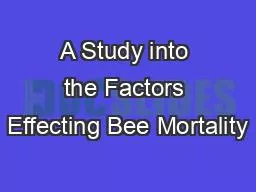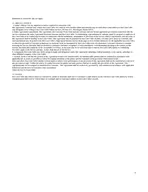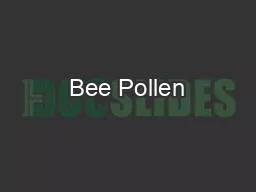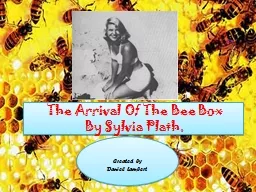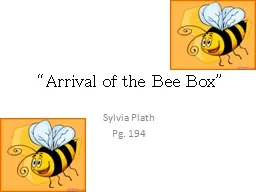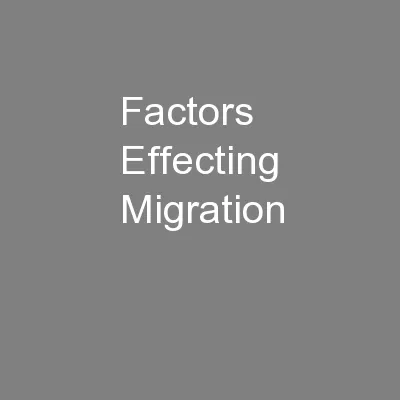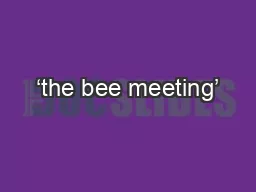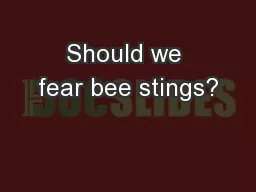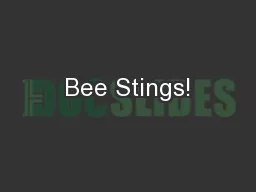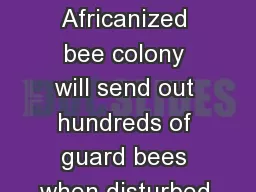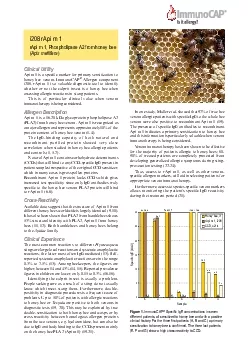PPT-A Study into the Factors Effecting Bee Mortality
Author : dardtang | Published Date : 2020-06-25
By Rosie Flett Overview of presentation Introduction Colony Collapse Disorder CCD Diseases and Parasites Industrial Agriculture Climate Change Discussion Introduction
Presentation Embed Code
Download Presentation
Download Presentation The PPT/PDF document "A Study into the Factors Effecting Bee M..." is the property of its rightful owner. Permission is granted to download and print the materials on this website for personal, non-commercial use only, and to display it on your personal computer provided you do not modify the materials and that you retain all copyright notices contained in the materials. By downloading content from our website, you accept the terms of this agreement.
A Study into the Factors Effecting Bee Mortality: Transcript
Download Rules Of Document
"A Study into the Factors Effecting Bee Mortality"The content belongs to its owner. You may download and print it for personal use, without modification, and keep all copyright notices. By downloading, you agree to these terms.
Related Documents

